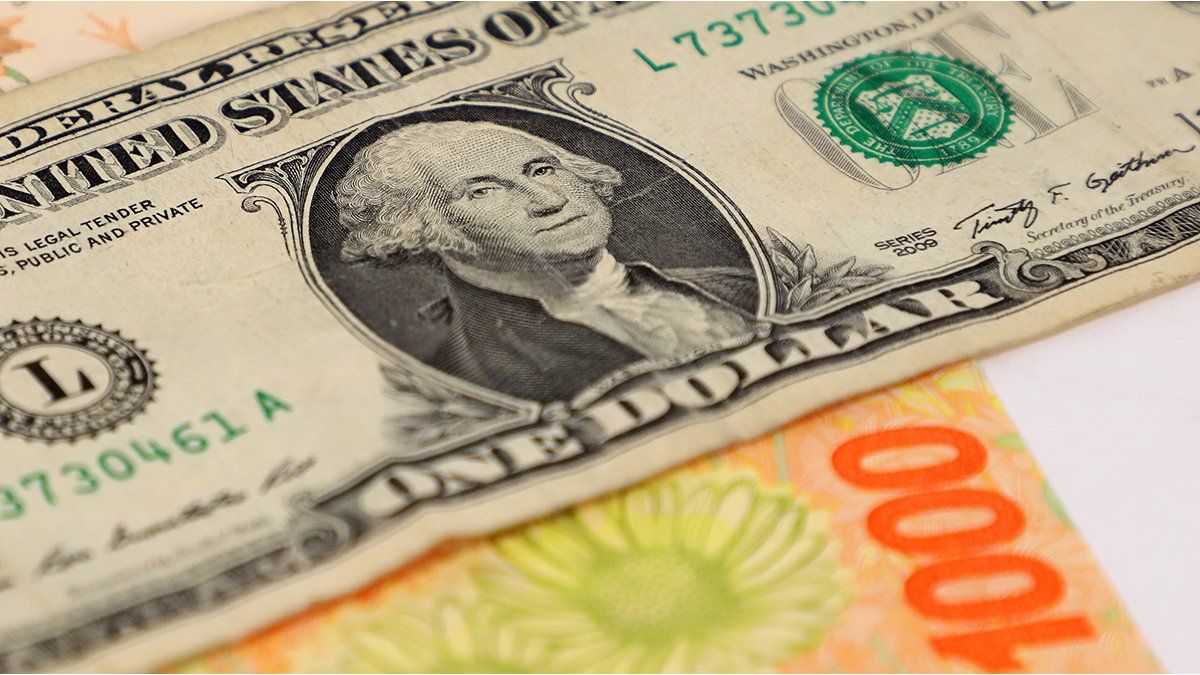This week, The dynamics of the parallel dollars registered a slight calm compared to the previous acceleration, although, as was expected to happen as the election approached, this Friday, the Cash With Settlement dollar (CCL), which is the one used by the companies to dollarize their assets, accelerated and exceeded $1,000 for the first time. This was accompanied by an increase of up to 25% in Cedears, while the MEP remained slightly below $900, somewhat in line with the blue. And the market is already thinking about the post-election scenario and analyzing how the economy will continue under these conditions.
According to what he says to Ambit economist Ricardo Aronskind, “the dynamics of parallel dollars in recent days cannot but be associated with an energetic reaction of the State against private maneuvers” of speculation. Thus, it refers to the raids and operations that the Government carried out in recent weeks to control this illegal market, as well as the measures that the Central Bank (BCRA) was taking to control financial institutions and the futures market.
“It is not that there is no objective situation of lack of dollars, which the Government has been managing quite effectively despite the multiple material and political obstacles. But it is evident that from the call of one of the candidates to run against the banks to withdraw deposits and go out to buy dollars in droves, a clear political intention can be identified in that movement,” explains Aronskind.
In fact, this Friday, the BCRA assisted the needs of the exchange market with US$45 million and accumulated sales of more than US$140 million during the week. This occurs in a context of shortage of US currency in which, with a fixed official dollar, the gaps with the parallels are above 100%.
Dollar: what can happen post-elections?
This is how, in the current climate of uncertainty, It is not an easy task to draw a panorama forward. This is what the chief economist of the Scalabrini Ortiz Center for Social and Economic Studies (CESO), Federico Zirulnik, states when he maintains that “the Milei phenomenon and eventual dollarization make it very difficult to plan beyond the elections.”
The economist suggests that the fact that he obtained a higher result than expected in the primary elections (PASO) and his latest statements caused a large part of the market and the economy in general to be seeking coverage against this eventual dollarization.
On Sunday the general elections are held and the possibility of going to a runoff is open. Given this idea, Zirulnik points out that “if that possibility arises, it is most likely that the current situation in the exchange market will deepen” until November 19, when that second round would be held.
However, as Aronskind mentions, the reaction of the caves that stopped operating in many cases “seems to demonstrate that it is true that when there is a political response and an administration willing to use all available tools, this type of speculative game, of “an enormous social harm, can be limited.”
And EcoGo economist Sebastián Menescaldi points out that “The decline of the blue responds to the operations that were carried out in the previous week of the election”. For him, it is temporary, because he does not see that the dollarization pressure has decreased and he does not rule out that it could increase in the future.
The Government, with the ability to control the dollar
Although for Aronskinsd, going forward, this type of controls, which can help achieve a lower dollar, could serve to apply a clear brake on the reflexive reflexes of numerous economic actors, and “put on the freezer the political desire to cause hyperinflation.” to liquefy salaries and severely contract the internal market.”
However, Menescaldi doubts the direct relationship between a reduction or control of the forward parallel exchange rate and a reduction in inflation. “I don’t think this is going to have a very strong economic effect. What it seems is that people are going to continue wanting dollars and inflation is still there more than anything because there is no macro element that has changed and justifies a decrease,” he says.
And, along similar lines, economist Martín Carro maintains that “the impact of the blue dollar on the economy is overestimated.” He explains that, although it is true that the decision to postpone payments for imports means that, at this time, financial dollars have a somewhat greater impact than usual on the costs of imported inputs, the bulk of imports continue to be guided by the official dollar, which is why he points out that “the blue dollar has no impact.”
Companies, prices, the dollar and what is coming
However, as is clear from the reaction of the CCL this Friday, which jumped more than $150 on the last day before the elections, it recognizes that “the financial dollar is surely used as a unit of account in business profits.” ”.
In this context, he points out that, If the downward trend in the blue dollar is confirmed, a few days of this dynamic will not have a very strong impact on expectations. “Unfortunately, the effects of the rise and fall are asymmetrical. And the fact is that an increase in blue translates more quickly into prices and the expectations of the economy than a decrease,” he indicates.
What happens is that what the market does is speculate and wait a little to discount the decline because, given that it has already reached a higher price, “the bet is that it can reach it again in the short or medium term.”
However, as he said, Carro believes that this is felt more in the profit margin than in prices, which are governed by other more macroeconomic variables, such as the shortage of dollars, the issuance and devaluation speculation that can be transferred in to some degree in prices, but it is not governed as much by the blue as by other markets such as the future dollar and financial markets.
Dollar and economy, economy and dollar, a duo that is difficult to separate and predict in the Argentine imagination and especially in a context in which speculation by political and economic actors is the order of the day. Rarely has the greenback been as protagonist as this time in a presidential election and this is closely associated with the scarcity of that transactional input in a scenario in which a dollarization proposal with little foundation is introduced.
Analysts find it difficult to anticipate what will happen the day after this Sunday, October 22, but the truth is that uncertainty could continue to be present in the local economic dynamics for some time to come. Today, it seems that all the answers will come with the results of the elections.
Source: Ambito




